Pytorch实现实现LSTM和和GRU示例示例
为了解决传统RNN无法长时依赖问题,RNN的两个变体LSTM和GRU被引入。
LSTM
Long Short Term Memory,称为长短期记忆网络,意思就是长的短时记忆,其解决的仍然是短时记忆问题,这种短时记忆比较长,能一
定程度上解决长时依赖。
上图为LSTM的抽象结构,LSTM由3个门来控制,分别是输入门、遗忘门和输出门。输入门控制网络的输入,遗忘门控制着记忆单元,输
出门控制着网络的输出。最为重要的就是遗忘门,可以决定哪些记忆被保留,由于遗忘门的作用,使得LSTM具有长时记忆的功能。对于
给定的任务,遗忘门能够自主学习保留多少之前的记忆,网络能够自主学习。
具体看LSTM单元的内部结构:
�
�
在每篇文章中,作者都会使用和标准LSTM稍微不同的版本,针对特定的任务,特定的网络结构往往表现更好。
GRU
上述的过程的线性变换没有使用偏置。隐藏状态参数不再是标准RNN的4倍,而是3倍,也就是GRU的参数要比LSTM的参数量要少,但
是性能差不多。
Pytorch
在Pytorch中使用nn.LSTM()可调用,参数和RNN的参数相同。具体介绍LSTM的输入和输出:
输入: input, (h_0, c_0)
input:输入数据with维度(seq_len,batch,input_size)
h_0:维度为(num_layers*num_directions,batch,hidden_size),在batch中的
初始的隐藏状态.
c_0:初始的单元状态,维度与h_0相同
输出:output, (h_n, c_n)
output:维度为(seq_len, batch, num_directions * hidden_size)。
�
h_n:最后时刻的输出隐藏状态,维度为 (num_layers * num_directions, batch, hidden_size)
c_n:最后时刻的输出单元状态,维度与h_n相同。
LSTM的变量:
的变量:
以以MNIST分类为例实现
分类为例实现LSTM分类分类
MNIST图片大小为28×28,可以将每张图片看做是长为28的序列,序列中每个元素的特征维度为28。将最后输出的隐藏状态 作为抽象
的隐藏特征输入到全连接层进行分类。最后输出的
导入头文件:
导入头文件:
import torch
import torch.nn as nn
import torch.optim as optim
import torchvision
from torchvision import transforms
class Rnn(nn.Module):
def __init__(self, in_dim, hidden_dim, n_layer, n_classes):
super(Rnn, self).__init__()
self.n_layer = n_layer
self.hidden_dim = hidden_dim
self.lstm = nn.LSTM(in_dim, hidden_dim, n_layer, batch_first=True)
self.classifier = nn.Linear(hidden_dim, n_classes)
def forward(self, x):
out, (h_n, c_n) = self.lstm(x)
# 此时可以从out中获得最终输出的状态h
# x = out[:, -1, :] x = h_n[-1, :, :] x = self.classifier(x)
return x
训练和测试代码:
训练和测试代码:
transform = transforms.Compose([
transforms.ToTensor(),
transforms.Normalize([0.5], [0.5]),
])
trainset = torchvision.datasets.MNIST(root='./data', train=True, download=True, transform=transform)
trainloader = torch.utils.data.DataLoader(trainset, batch_size=128, shuffle=True)
testset = torchvision.datasets.MNIST(root='./data', train=False, download=True, transform=transform)
testloader = torch.utils.data.DataLoader(testset, batch_size=100, shuffle=False)
net = Rnn(28, 10, 2, 10)
net = net.to('cpu')
criterion = nn.CrossEntropyLoss()
optimizer = optim.SGD(net.parameters(), lr=0.1, momentum=0.9)
# Training
def train(epoch):
print('\nEpoch: %d' % epoch)
net.train()
train_loss = 0
correct = 0
total = 0
for batch_idx, (inputs, targets) in enumerate(trainloader):
inputs, targets = inputs.to('cpu'), targets.to('cpu')
optimizer.zero_grad()
outputs = net(torch.squeeze(inputs, 1))
loss = criterion(outputs, targets)
loss.backward()
optimizer.step()
�
train_loss += loss.item()
_, predicted = outputs.max(1)
total += targets.size(0)
correct += predicted.eq(targets).sum().item()
print(batch_idx, len(trainloader), 'Loss: %.3f | Acc: %.3f%% (%d/%d)'
% (train_loss/(batch_idx+1), 100.*correct/total, correct, total))
def test(epoch):
global best_acc
net.eval()
test_loss = 0
correct = 0
total = 0
with torch.no_grad():
for batch_idx, (inputs, targets) in enumerate(testloader):
inputs, targets = inputs.to('cpu'), targets.to('cpu')
outputs = net(torch.squeeze(inputs, 1))
loss = criterion(outputs, targets)
test_loss += loss.item()
_, predicted = outputs.max(1)
total += targets.size(0)
correct += predicted.eq(targets).sum().item()
print(batch_idx, len(testloader), 'Loss: %.3f | Acc: %.3f%% (%d/%d)'
% (test_loss/(batch_idx+1), 100.*correct/total, correct, total))
for epoch in range(200):
train(epoch)
test(epoch)
以上这篇Pytorch实现LSTM和GRU示例就是小编分享给大家的全部内容了,希望能给大家一个参考,也希望大家多多支持软件开发网。
您可能感兴趣的文章:pytorch下使用LSTM神经网络写诗实例pytorch 利用lstm做mnist手写数字识别分类的实例pytorch实现用CNN和LSTM
您可能感兴趣的文章
对文本进行分类方式
�
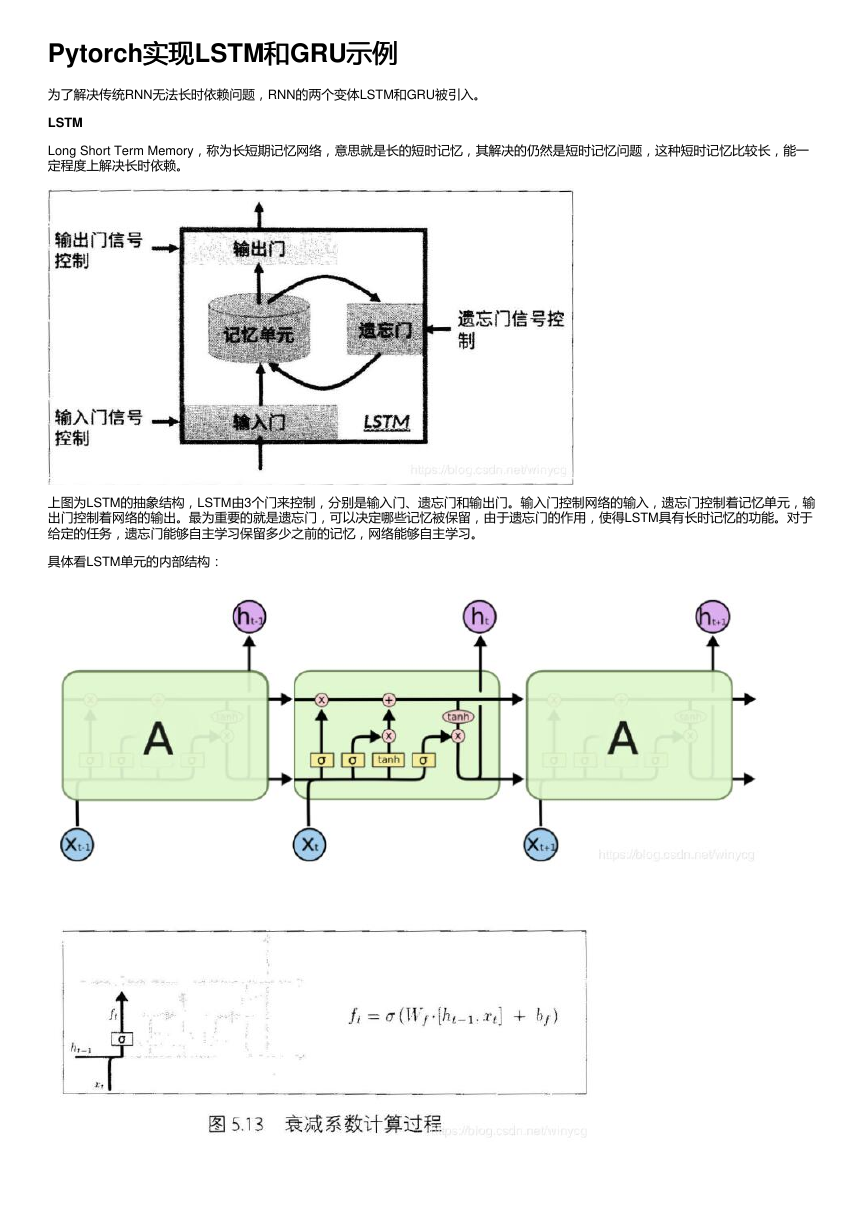
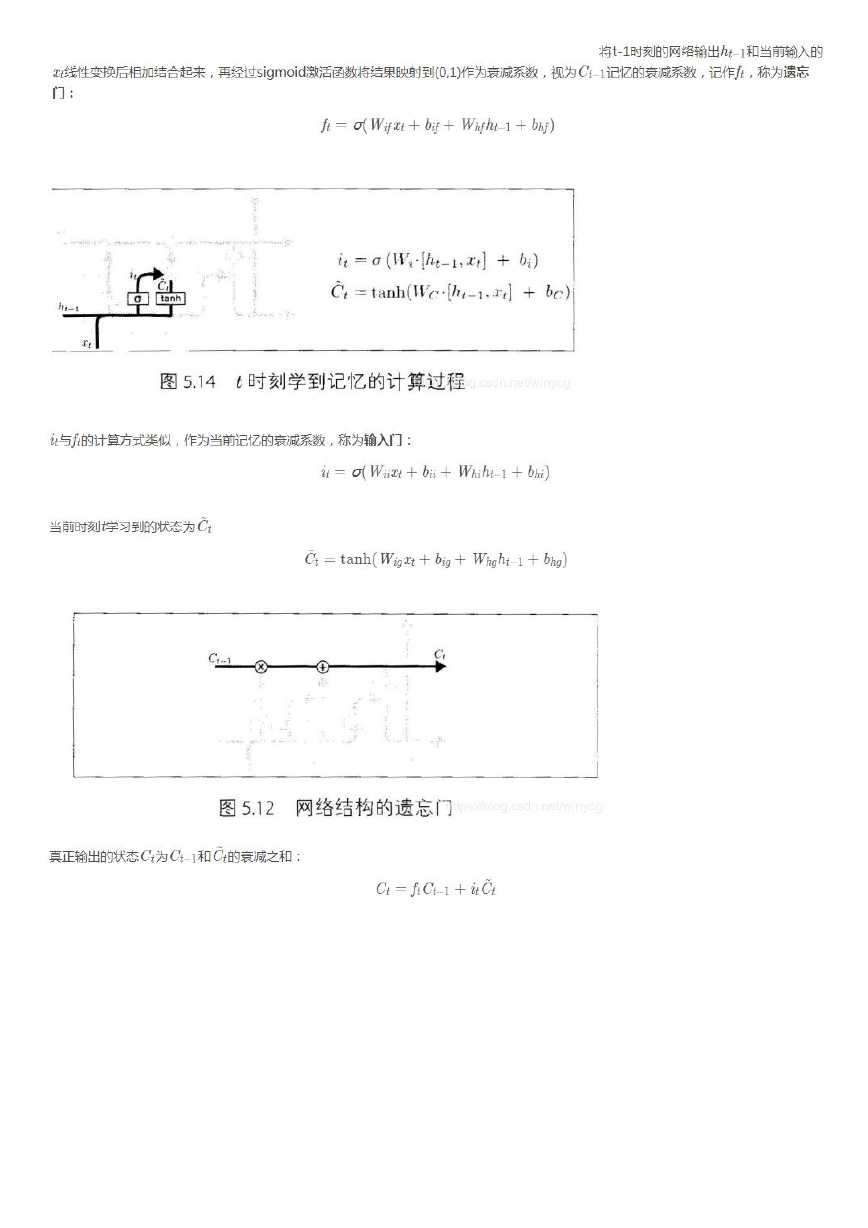
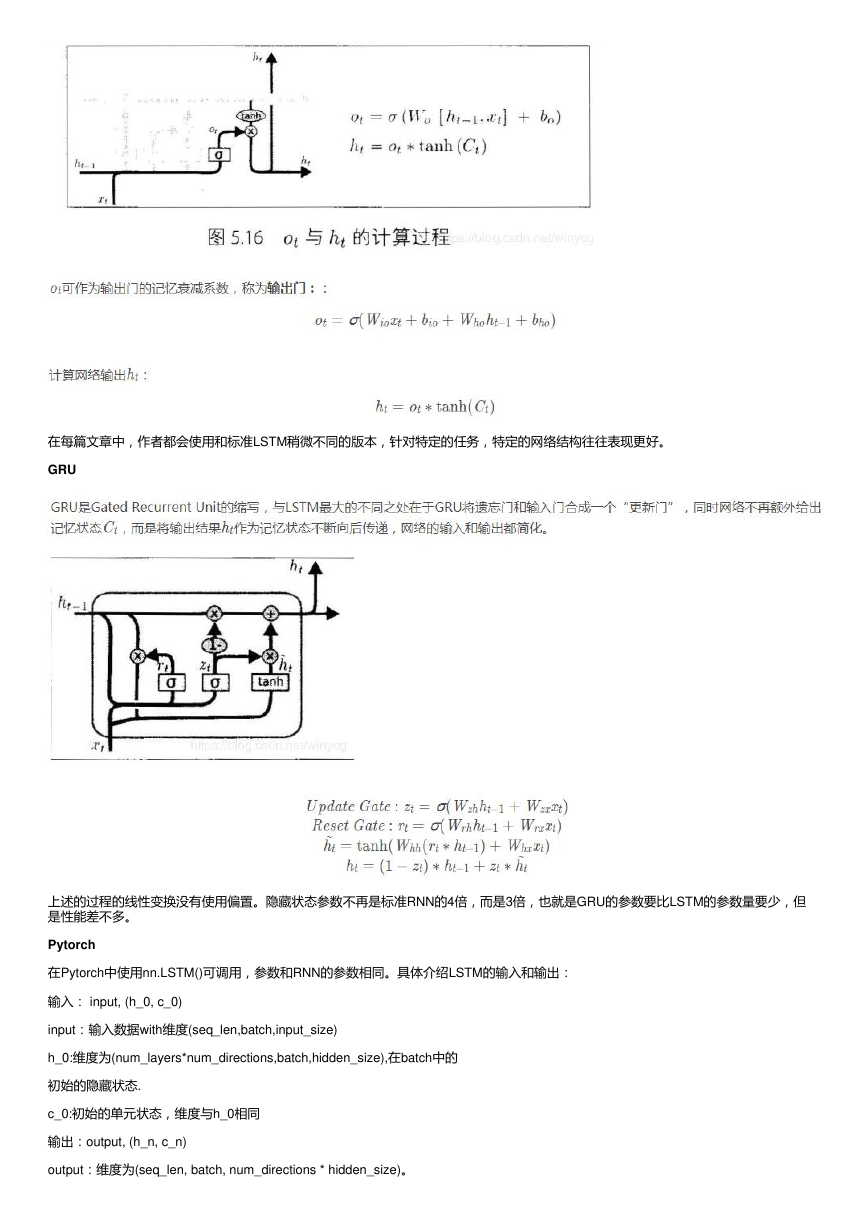
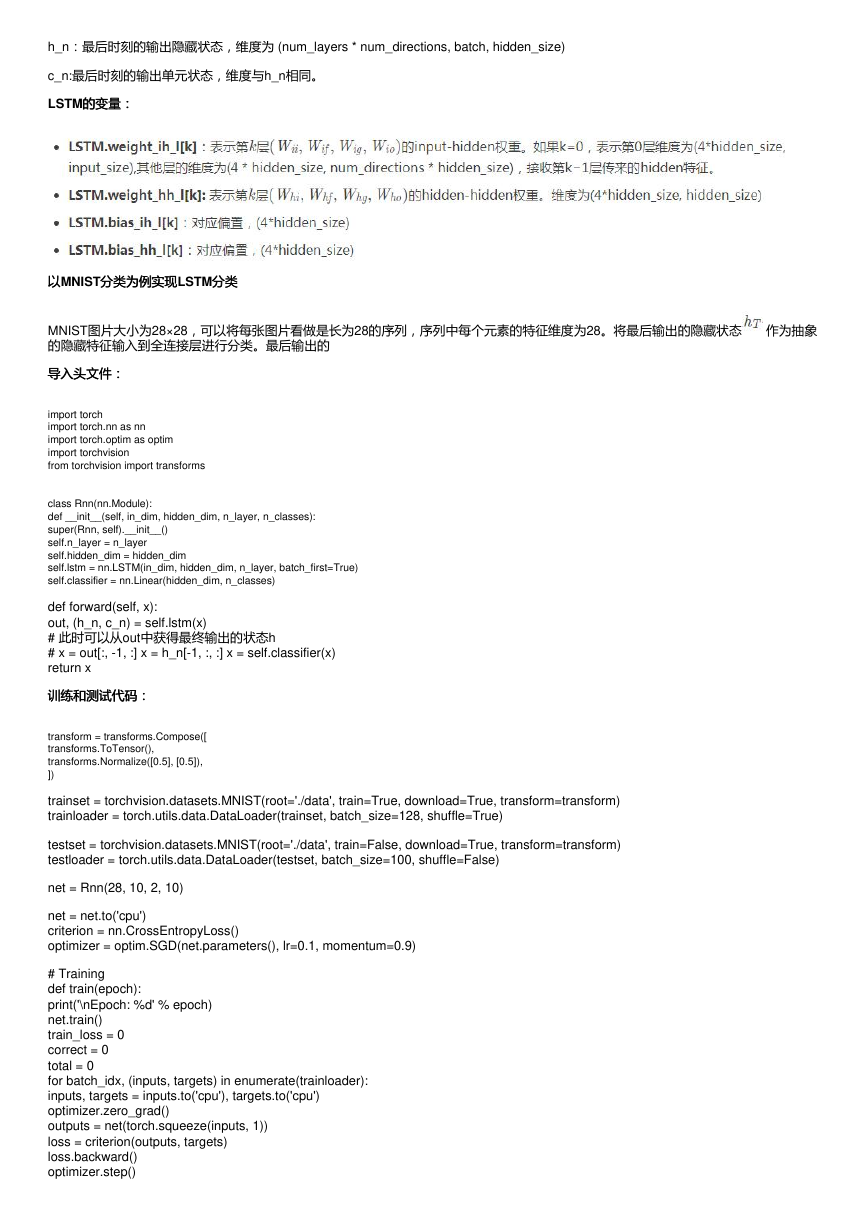
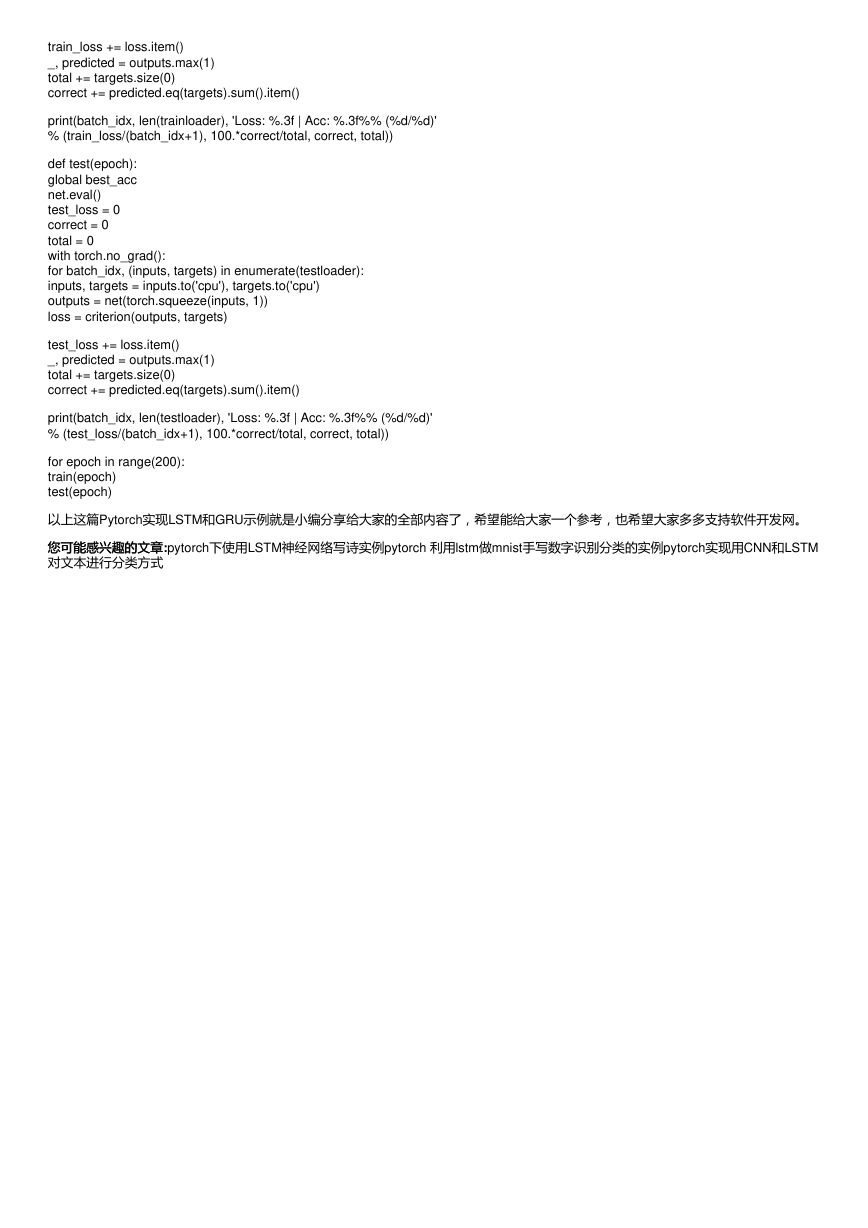





 2023年江西萍乡中考道德与法治真题及答案.doc
2023年江西萍乡中考道德与法治真题及答案.doc 2012年重庆南川中考生物真题及答案.doc
2012年重庆南川中考生物真题及答案.doc 2013年江西师范大学地理学综合及文艺理论基础考研真题.doc
2013年江西师范大学地理学综合及文艺理论基础考研真题.doc 2020年四川甘孜小升初语文真题及答案I卷.doc
2020年四川甘孜小升初语文真题及答案I卷.doc 2020年注册岩土工程师专业基础考试真题及答案.doc
2020年注册岩土工程师专业基础考试真题及答案.doc 2023-2024学年福建省厦门市九年级上学期数学月考试题及答案.doc
2023-2024学年福建省厦门市九年级上学期数学月考试题及答案.doc 2021-2022学年辽宁省沈阳市大东区九年级上学期语文期末试题及答案.doc
2021-2022学年辽宁省沈阳市大东区九年级上学期语文期末试题及答案.doc 2022-2023学年北京东城区初三第一学期物理期末试卷及答案.doc
2022-2023学年北京东城区初三第一学期物理期末试卷及答案.doc 2018上半年江西教师资格初中地理学科知识与教学能力真题及答案.doc
2018上半年江西教师资格初中地理学科知识与教学能力真题及答案.doc 2012年河北国家公务员申论考试真题及答案-省级.doc
2012年河北国家公务员申论考试真题及答案-省级.doc 2020-2021学年江苏省扬州市江都区邵樊片九年级上学期数学第一次质量检测试题及答案.doc
2020-2021学年江苏省扬州市江都区邵樊片九年级上学期数学第一次质量检测试题及答案.doc 2022下半年黑龙江教师资格证中学综合素质真题及答案.doc
2022下半年黑龙江教师资格证中学综合素质真题及答案.doc